Speaking at the mid-term conference of the 13th Party Central Committee in mid-May, Party General Secretary Nguyen Phu Trong affirmed that all ministries, agencies and the entire political system have an increasing awareness and take more proactive and effective actions in line with the spirit of the 13th National Party Congress’s Resolution on comprehensive and harmonious socio-economic development, social progress and fairness in every policy and step.
Multidimensional poverty reduction toward sustainability
Viet Nam has 54 ethnic groups, with the majority being the Kinh ethnic group of about 14.2 million people or nearly 15% of the total population. The ethnic minority groups primarily reside in mountainous, remote and border areas in the east, northwest, northcentral, central coastal, Central Highlands, and southwest. The country has nearly 3,500 communes, wards and towns located in ethnic minority and mountainous areas.
The Party and State always advocate the comprehensive development of ethnic minority communities, gradually narrowing the development gap between the mountainous and lowland regions.
During the renewal period, the Party and the State have enforced numerous breakthrough policies to develop mountainous regions. Different national target programmes focusing on health care, culture, and social issues have been initiated, and policies supporting housing, land, agricultural production, and domestic water supply launched. In addition, preferential loans for production, vocational training, and job creation have been provided while land and forests have been allocated for agro-forestry promotion, resulting in positive changes in socio-economic development in ethnic minority and mountainous areas.
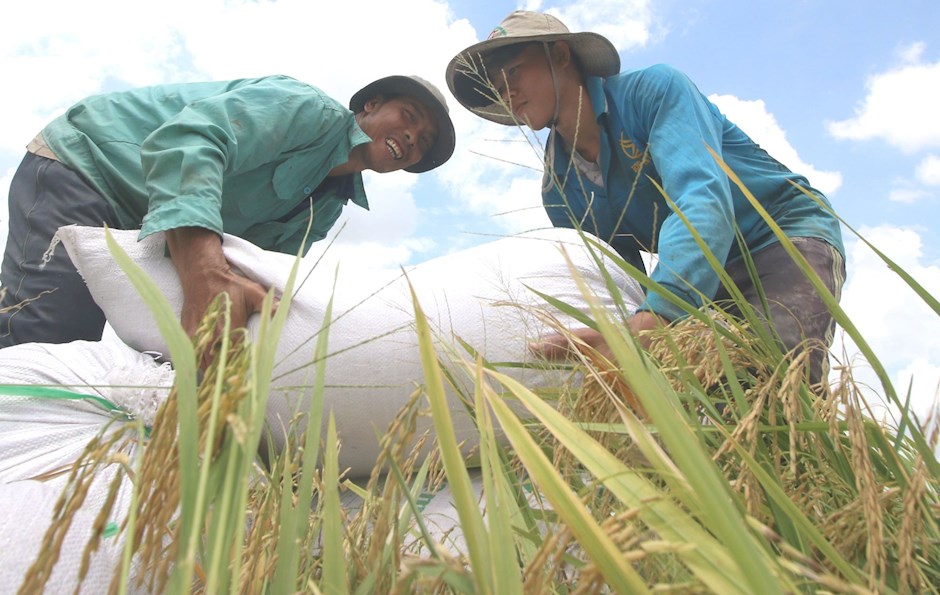
Farmers harvest rice. Vietnam has made impressive achievements in poverty reduction after 30 years of renewal (Photo: VNA)
According to the Ministry of Agriculture and Rural Development’s report on the results of the new-style rural development programme in extremely difficult areas during 2016-2020, all communes built roads accessible by cars to the centres, 80% of the villages had access to electricity, over half of the communes had medical stations that meet national standards, and all ethnic minority and poor people enjoyed free health insurance.
Following the 13th National Party Congress, the Party has advocated concerted measures for multi-dimensional, sustainable and inclusive poverty reduction, with the implementation of the National Target Programme for Socio-economic Development in Ethnic Minority and Mountainous Areas for the 2021-2030 period as the focus of the efforts.
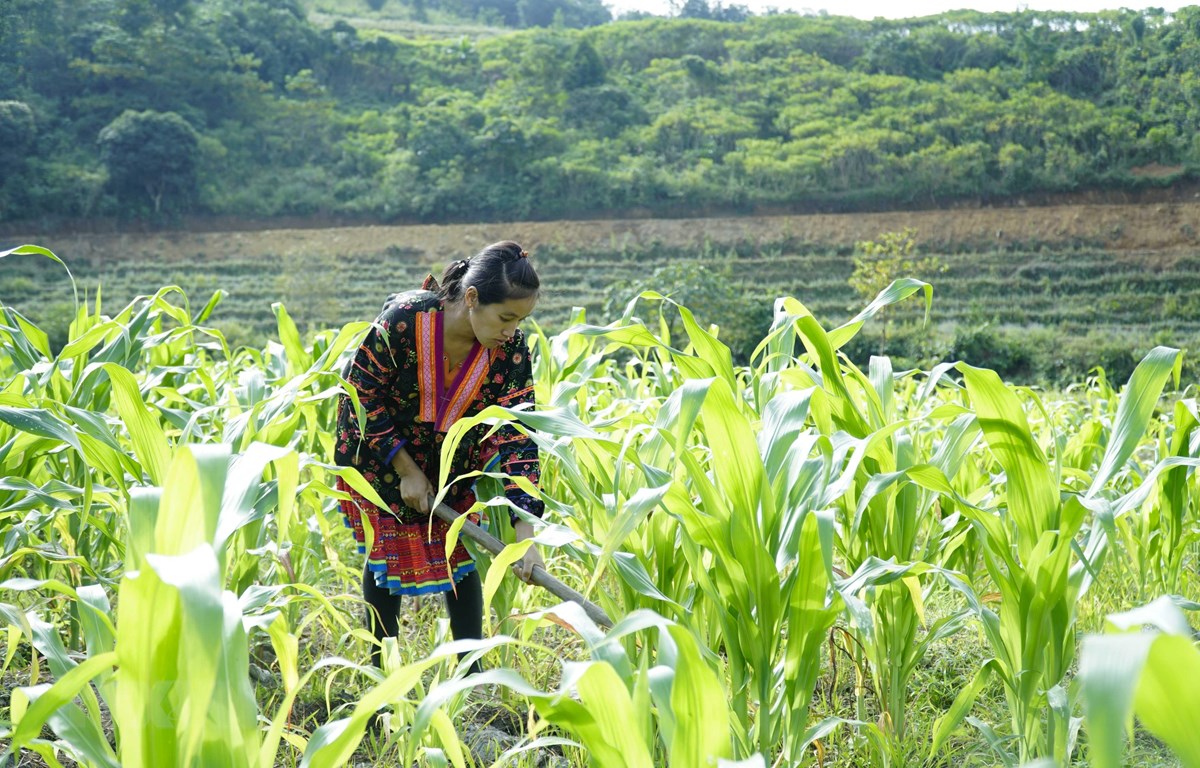
A girl in Muong Cha, Dien BIen province take care of a corn field (Photo: VNA)
According to a report reviewing 2022 poverty reduction work and launching 2023 tasks, over 23 trillion VND (958 million USD) was allocated to effectively reduce poverty last year. As a result, the living conditions of the poor have been gradually improved, and social welfare guaranteed. The socio-economic infrastructure in rural, mountainous, and ethnic minority areas has been upgraded while the development gap between regions has been significantly narrowed.
The Ministry of Labour, Invalids and Social Affairs (MoLISA) reported that last year, the number of multidimensionally poor households nationwide decreased by about 1.5%. The number of poor households in ethnic minority groups fell by over 3% while that in poor districts dropped by about 5%.
Sustainable development policies in Central Highlands
As a strategically important area for the country’s defence and security, the Central Highlands accounts for 16.8% of the territory and is home to around 6% of the national population. The proportion of ethnic minorities in the region is 36.52%, with 12 indigenous ethnic minority groups making up roughly 25%.
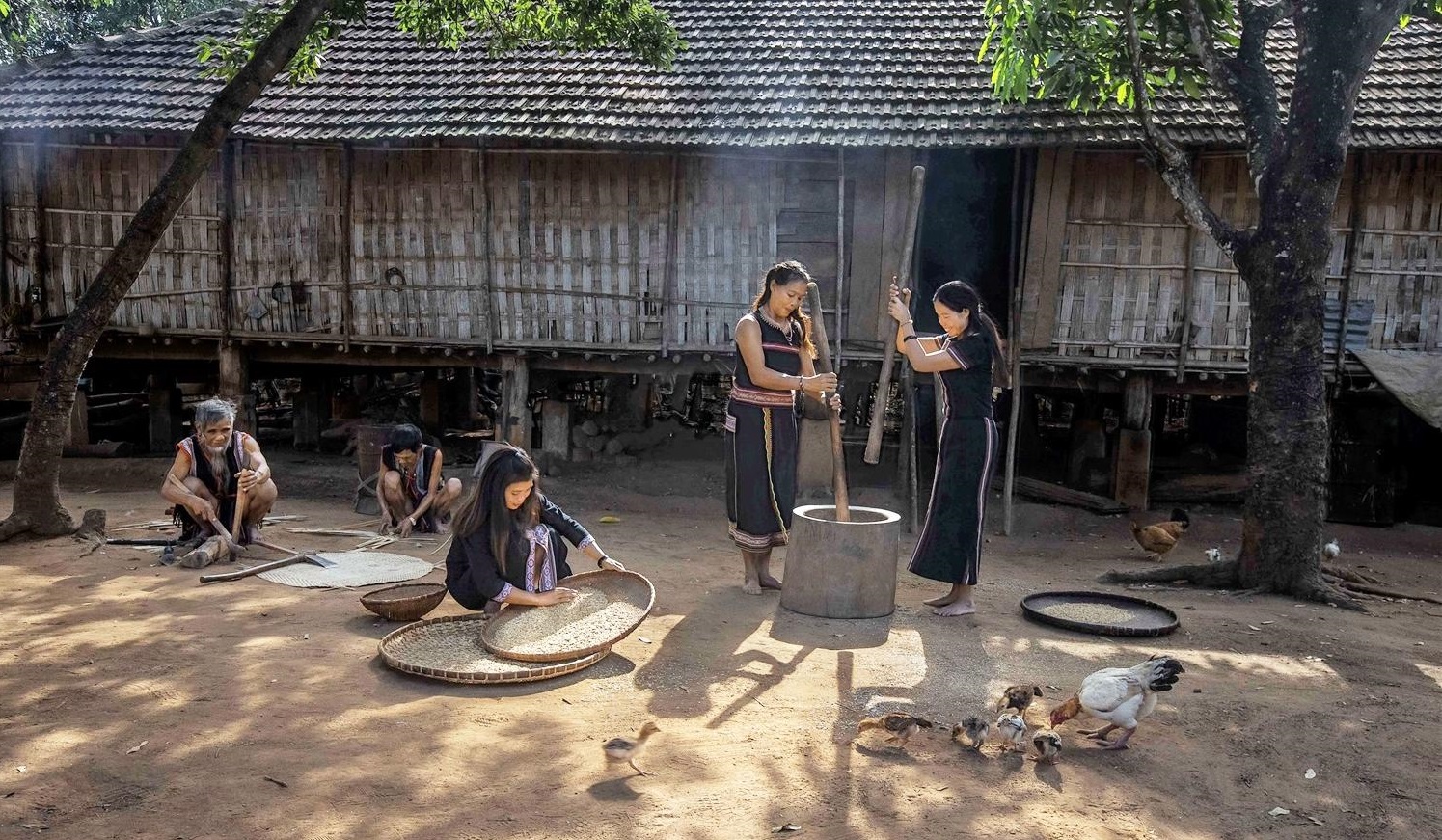
The daily life of Ede ethnic people in the Central Highlands next to their traditional house (Photo: baodantoc.vn)
The Central Highlands has received significant support from the Party and State through various national target programmes regarding poverty reduction, clean water, environment sanitation and education, notably Programme 135-II, the Rapid and Sustainable Poverty Reduction Programme for 62 poor districts (Programme 30A), Programme 168, Programme 135, and other national target programmes on rural infrastructure development, resettlement and relocation for ethnic minority communities.
Programmes 132 and 134, which address the allocation of production and housing land, and clean water for ethnic minority groups, have been carried out with concerted efforts, most recently the national target programme on new-style rural development.
The economic growth rate of the Central Highlands provinces has maintained a relatively moderate level for a long time, leading to an improvement in local lives. The 2022 review conducted by the MoLISA showed that the multidimensional poverty rate (including poor and near-poor households) in the Central Highlands was 15.39%, with over 236,000 households compared to the national average of 7.52% with over 1.9 million households.
The number of poor households in the Central Highlands remains relatively high compared to other regions such as the north central, the central coast and the Mekong Delta, but significantly lower than the northern midland and mountainous regions.
Information poverty reduction mitigates risk of backwardness
To achieve sustainable poverty reduction, Viet Nam needs to allocate more resources to the northern mountainous and Central Highlands regions, particularly in areas inhabited by ethnic minority groups.
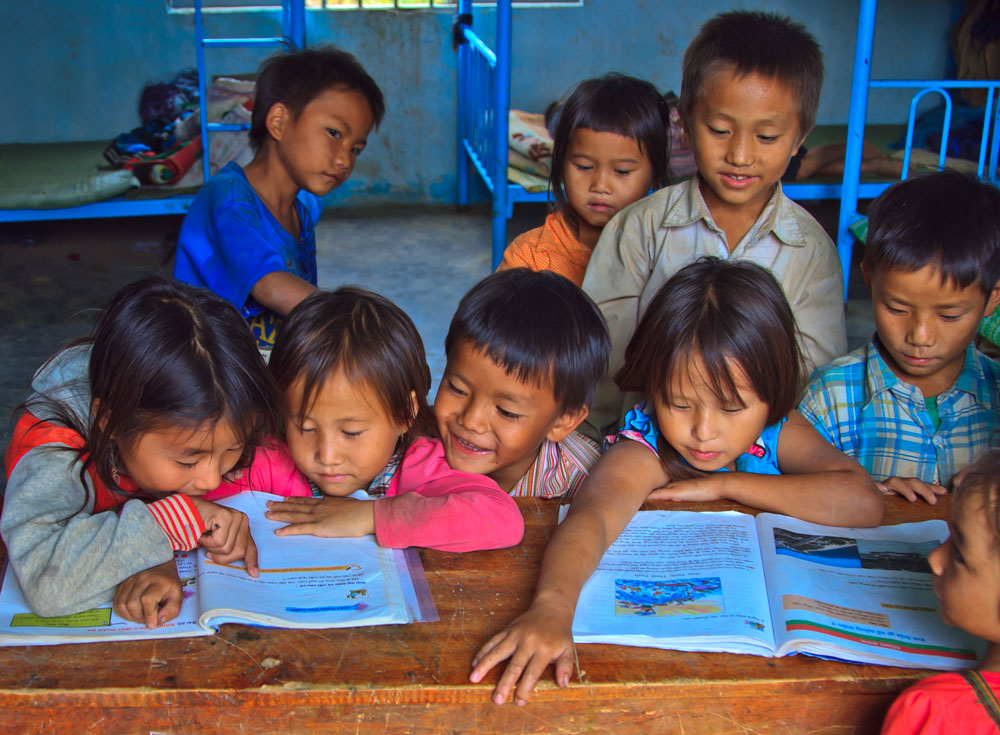
Ethnic students at Lieng Sronh primiary school learn lessons after class hours (Photo: baodantoc.vn)
Efforts should be made to actively promote the socio-economic development linkage between disadvantaged and developed areas. Of particular significance is the “information poverty reduction” in ethnic minority areas, as these communities are at risk of lagging behind the overall development of the country. Currently, only over 61% of the households in these areas have access to the Internet, around 93% of the households use telephones (both landline and mobile), around 82% of the households have TVs, and only 10.3% of the households use computers (desktops or laptops).
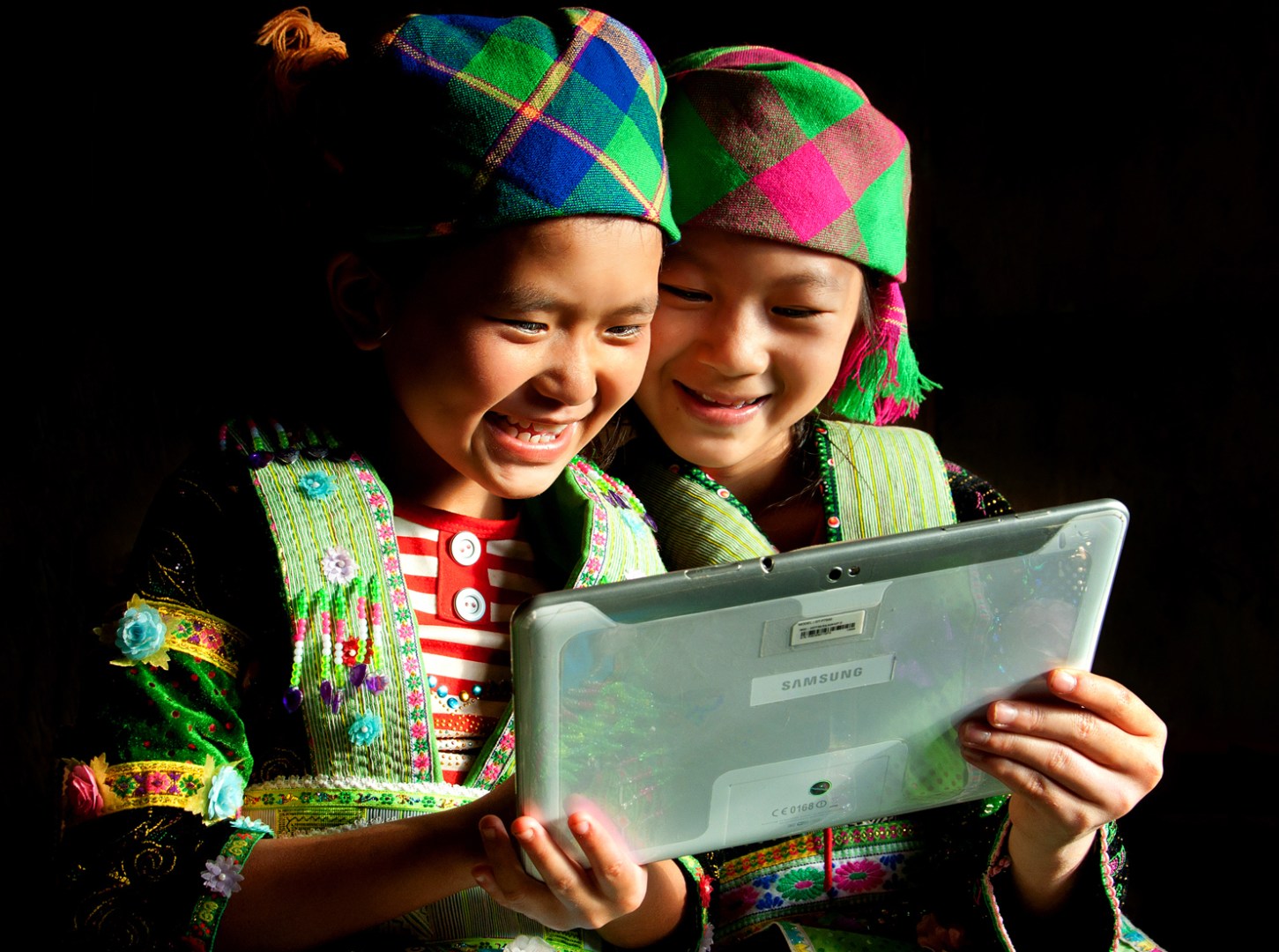
Children in northern mountainous region learn technology on tablet
The “information poverty” not only hinders sustainable poverty reduction among the ethnic minority communities but also slows down the development of mountainous regions. It is also one of the direct causes that make some individuals vulnerable to manipulation and recruitment by hostile forces, leading to activities against the administration and undermining national solidarity.
The National Targeted Programme for Sustainable Poverty Reduction for the 2021-2025 period recognises that enhancing access to essential information for ethnic minority groups is a particularly important task. The Government has set a goal to ensure that all communes with socio-economic difficulties will have public information access points to serve the residents’ use of essential information services, contributing to the socio-economic development in these areas./.
Q.Hoa t.h / VNA










